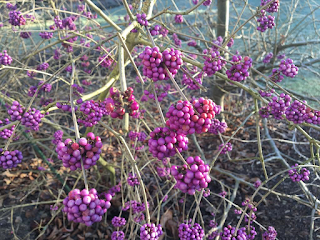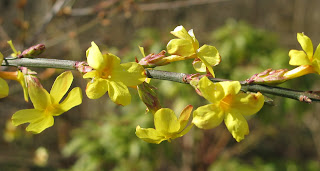This week's genus, Corylus, has been eradicated from our garden as too boisterous, but fortunately there's one to admire just a couple of metres over the back boundary:
After close attention to the twigs in the image above you will rightly guess that this is a corkscrew hazel, the cultivar 'Contorta'. Its fine catkins show up before the spring foliage appears.
Our photographer carefully angled the shot to also include the neighbour's full-sized Corylus avellana, which has catkins of a much browner color.
The main species, also known in English as the European filbert, grows into a 6-metre tree, but Contorta usually minds its place. The catkins are a nuisance to us allergy sufferers, but one tree more or less makes no difference among the millions of hazels flourishing in northern Europe.
After close attention to the twigs in the image above you will rightly guess that this is a corkscrew hazel, the cultivar 'Contorta'. Its fine catkins show up before the spring foliage appears.
Our photographer carefully angled the shot to also include the neighbour's full-sized Corylus avellana, which has catkins of a much browner color.
The main species, also known in English as the European filbert, grows into a 6-metre tree, but Contorta usually minds its place. The catkins are a nuisance to us allergy sufferers, but one tree more or less makes no difference among the millions of hazels flourishing in northern Europe.






























